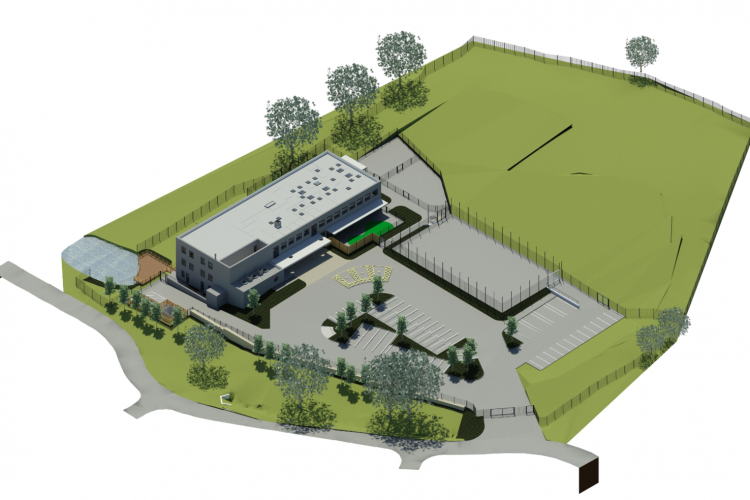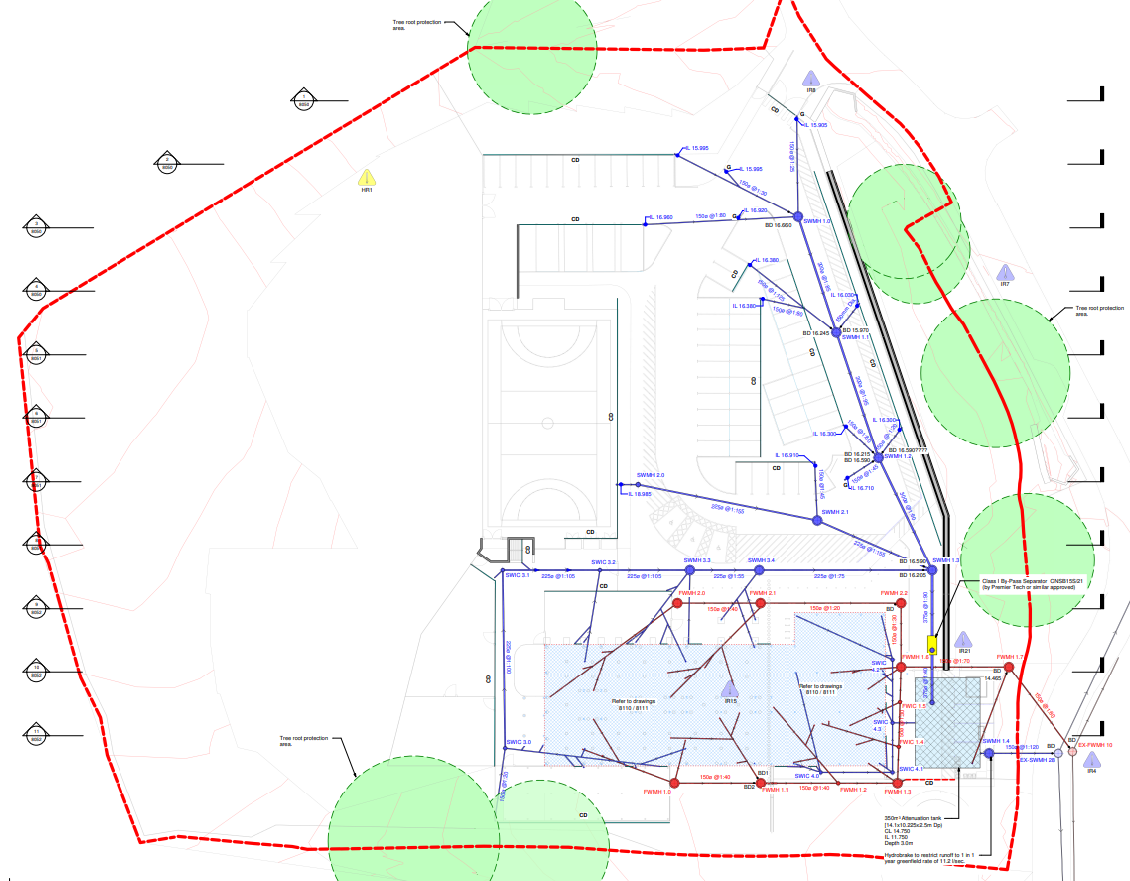We’re delighted to introduce our new Project Spotlight series, which will showcase the projects we’re currently working on and the engineering techniques involved.
In our first Project Spotlight we’ll be looking at our work at Reef Way SEMH School in Hailsham. This project involved a number of challenges but these were successfully navigated through the use of intelligent engineering solutions. Read on to find out more about the project, the factors involved and how our pre-planning services assisted construction.
Reef Way SEMH School
This £10 million project will create an educational space for 80 pupils aged between four and sixteen who have social, emotional and mental health difficulties. Reef Way is being built by East Sussex County Council and will be the first of its kind in the area, with state-of-the art facilities for its students.
Dealing with counterfort drainage
During initial site investigations it was established that the site had slope stability issues. As a result, we decided to seek specialist advice from geotechnical engineers Southern Testing. After conducting a detailed analysis it was concluded that counterfort drainage was required to reduce groundwater and help slope stability and so we incorporated this into our design solutions. Understanding a site’s context in this way is crucial for cost-effective and long-lasting solutions and forms the centre of our design process.
Introducing Sustainable Urban Drainage Systems
Our drainage solutions for Reef Way also helped the client meet its sustainability needs, as this project is benefitting from the use of sustainable drainage systems (SuDS). Proposals thus far include restricting the surface water run-off from the site to the 1 in 1 year greenfield run-off rate. This rate is in line with East Sussex County Council (ESCC) and Pevensey and Cuckmere Water Level Management Board guidance. The drainage systems also provide attenuation storage to accommodate the additional run-off volume arriving from the site during the peak event (100 year storm event plus a 40% climate change allowance). The design was in accordance with best practice guidance and fully compliant with national, regional and local policy.
One of the fundamental elements of our design for Reef Way was to understand the overall masterplan development, and how this site in particular was considered as part of that scheme back in 2009. It became clear that this site would have an important part to play in the four principle stages of the SuDS management train: (1) Prevention; (2) Source Control; (3) Site Control and (4) Regional Control.
Due to the experience and technical understanding here at Lyons O’Neill, it was identified early that the receiving watercourse known as the Whelpley Sewer was a very sensitive water environment managed by the Pevensey and Cuckmere Water Management Board. The watercourse is also designated as a Site of Specific Scientific Interest (SSSI) protected under environmental legislation. At this stage careful consideration was given to the design where various surface water treatment measures were linked in a series.
Gaining approvals from statutory consultees
Many may not realise that engineering solutions often involve engaging with legal processes. This was the case for Reef Way and after months of discussions, formal consent was finally granted by the Pevensey & Cuckmere Water Level Management Board under Byelaw 3 of the Boards Byelaws in line with the Land Drainage Act 1991, to discharge surface water run-off from a proposed development site to a nearby ordinary watercourse.
A foul water connection approval was also granted under a Section 106 of the Water Industry Act 1991 by Southern Water.
Ordinary watercourse consent was granted by East Sussex Council (ESCC) for the counterfort drainage to discharge to the stream at the bottom of the site.


